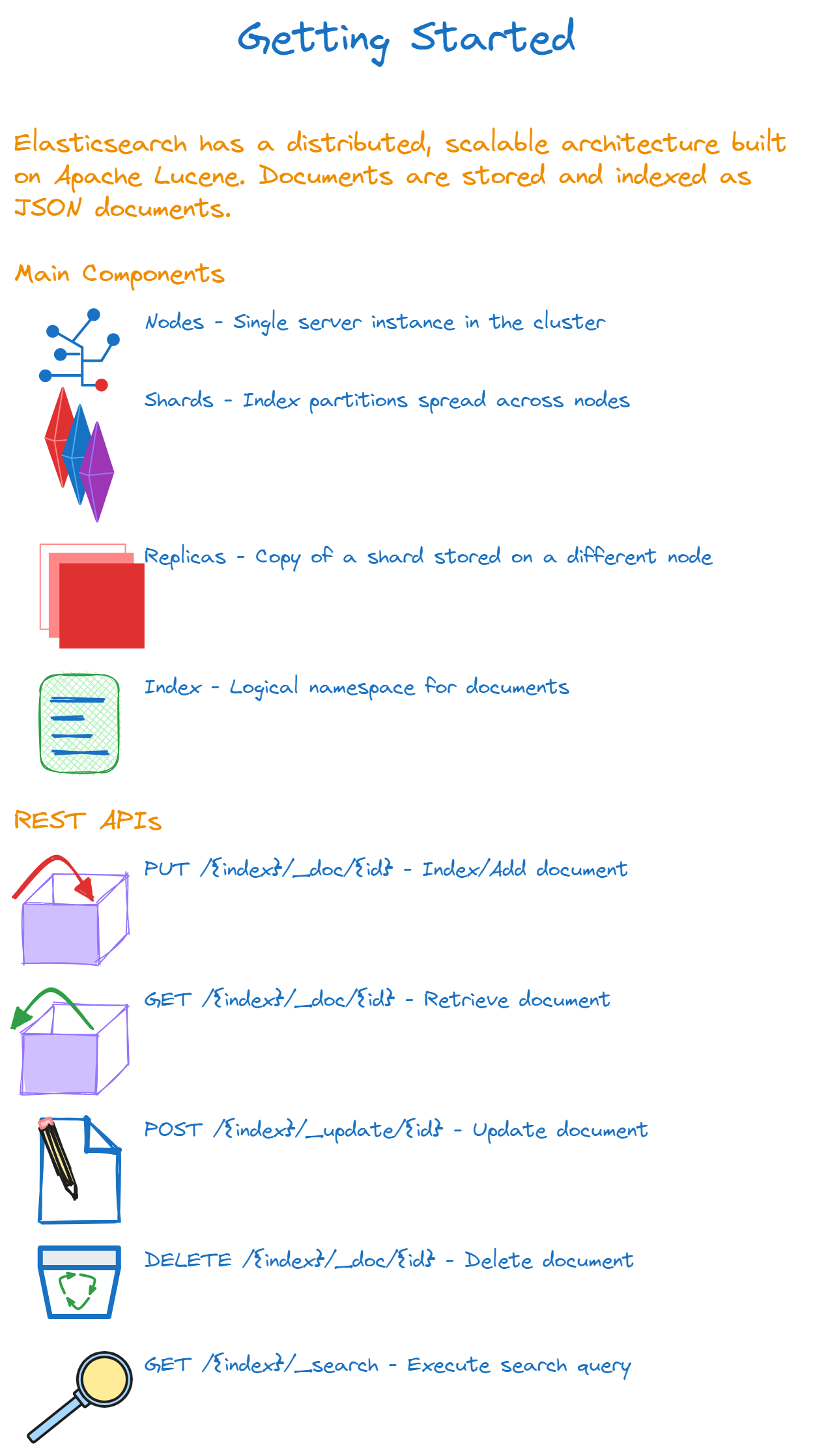Getting Started with Elasticsearch
Elasticsearch has a distributed, scalable architecture built on Apache Lucene. Documents are stored and indexed as JSON documents.

The main components are:
- Nodes - Single server instance in the cluster
- Shards - Index partitions spread across nodes
- Replicas - Copy of a shard stored on a different node
- Index - Logical namespace for documents
Elasticsearch can be installed on Linux, Windows, Docker, and the cloud. The basic steps are:
- Download and install Elasticsearch binary or Docker image
- Update configuration file with network, cluster, node settings
- Start Elasticsearch service
- Test it out by indexing and searching sample data
Elasticsearch provides REST APIs for indexing, searching, updating, and deleting documents in indices. Some key APIs include:
- PUT /{index}/_doc/{id} - Index/Add document
- GET /{index}/_doc/{id} - Retrieve document
- POST /{index}/_update/{id} - Update document
- DELETE /{index}/_doc/{id} - Delete document
- GET /{index}/_search - Execute search query
For scalability, we can distribute nodes across servers and geographical regions. Replicas provide redundancy and high availability. Security features like access control, encryption, TLS, and role-based access can be enabled.
The cluster health API and monitoring tools like Cerebro allow managing and monitoring our Elasticsearch cluster.



